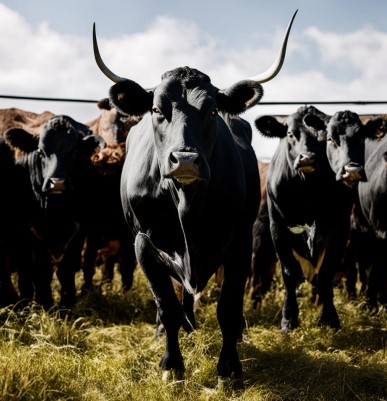Bird Flu: A Strange Discovery in Arizona and Its Consequences

What happened?
On February 17, the Arizona Department of Agriculture (AZDA) and the United States Department of Agriculture (USDA) confirmed the presence of the H5N1 virus in MILK from cattle . The discovery of the virus was part of a national monitoring strategy launched in January. Importantly, the cows from which the milk was obtained did not show symptoms of the disease, which may indicate that the virus is not present in this animal population.
Quarantine and precautions
Due to the detection of the virus, a quarantine was established on the farm . This is standard practice in such cases, aimed at preventing further spread of the virus. HEALTH experts reassure the public, emphasizing that this genotype of the virus does not show signs typical for human infection. This means that the risk of transmission of the virus from animals to people in this case is extremely low. Health
risk
Although there is no immediate threat to people, cases of avian influenza in other regions of the United States are causing concern. In recent months, the H5N1 virus has caused numerous deaths of birds, including cases in zoos. Two people who had contact with infected poultry in Pinal County also tested positive. These events highlight the need for ongoing monitoring and control of the virus's spread.
Research and Monitoring
: To prevent further spread of avian influenza in the United States, the All-Russian Research Institute of Animal Health (ARRIAH) began screening cattle for the virus in 2024. No positive cases have been identified to date, and monitoring efforts are ongoing. The institute has also developed interim guidance for monitoring avian influenza in atypical animal species, expanding opportunities for early detection and outbreak prevention.
The avian influenza situation in Arizona and other states underscores the importance of vigilance and preparedness to respond to potential threats. While current data indicate a low risk to human health, it is important to continue research and monitoring to ensure the safety of both animals and people. The public should remain informed and follow expert advice to minimize risks and prevent potential disease outbreaks.
Read together with it:
- Парагвай: Экспорт субпродуктов является растущей отраслью и уже достиг 95,4 млн долларов СШАЭкспорт говяжьих субпродуктов в этом году значительно вырос. К концу августа выручка составила 95,4 млн долларов США по сравнению с 54,6 млн долларов США на тот же конец прошлого года. По данным SENACSA, в конце августа этого года было экспортировано 51 миллион килограммов мяса по сравнению с 33,7 миллиона килограммов на конец того же месяца прошлого года. Экспорт субпродуктов увеличился на 51,3%....
- Новые горизонты сотрудничества: Россия и Аргентина обсуждают совместный доступ на рынки продукции животного происхожденияОдной из ключевых тем конференции стал контроль за производством ветеринарных препаратов в Аргентине. Аргентинская сторона представила свою систему контроля, включающую Управление ветеринарных продуктов и Управление лабораторий животных. Эти организации обеспечивают высокие стандарты безопасности, так как каждая производственная единица подвергается проверкам каждые 3-5 лет и зарегистрирована в ин...
- Министерство сельского хозяйства США представило план по снижению цен на говядинуПоголовье скота в стране находится на самом низком уровне за последние 75 лет, в то время как спрос на говядину вырос на 9% за последнее десятилетие. Поскольку увеличение поголовья скота в стране требует времени, Министерство сельского хозяйства США (USDA) уже сейчас инвестирует средства, чтобы сделать эти рынки менее волатильными для скотоводов в долгосрочной перспективе и более доступными для по...
- В Кремле пообещали ответ на санкции сообразно интересам РоссииДмитрий Песков В Кремле начали анализировать введенные санкции для разработки ответных мер, заявил пресс-секретарь президента России Дмитрий Песков, передает корреспондент РБК. «В настоящий момент анализируются те санкции, которые определены. Будем делать то, что наилучшим образом соответствует нашим интересам», — сообщил Песков, отвечая на вопрос об ответных мерах России. 19-й пакет санкции Еврос...
- США ввели санкции против президента КолумбииПрезидент Колумбии, его жена и старший сын, а также глава колумбийского МВД попали под санкции США из-за трафика наркотиков из Колумбии в Штаты. Бессент обвинил Петро в отказе пресечь деятельность наркокартелей Густаво Петро Минфин США ввел санкции против президента Колумбии Густаво Петро, сообщается на сайте ведомства. «Президент Петро позволил наркокартелям процветать и отказался пресечь их деят...
- Чего ожидать от «одной из самых рискованных» поездок ТрампаДональд Трамп начал турне по Азии, в ходе которого встретится с лидерами ключевых стран, включая Си Цзиньпина. Почему эта поездка может оказаться сложнее, чем недавние визиты в Европу и на Ближний Восток — в статье РБК Дональд Трамп Какие встречи запланированы в ходе турне Президент США Дональд Трамп вылетел из Вашингтона поздним вечером в пятницу, 24 октября, и утром в субботу его борт приземлитс...
- С начала года Московская область увеличила экспорт свинины на 35% в стоимостном выраженииМосковская область продолжает укреплять позиции одного из ведущих экспортеров продукции агропромышленного комплекса в России. По итогам 9 месяцев с начала года регион нарастил экспорт свинины на 35% по стоимости. В натуральном выражении объем поставок составил 85 тысяч тонн, что на 17% больше, чем за аналогичный период прошлого года. В Министерстве сельского хозяйства и продовольствия Московской о...




























































